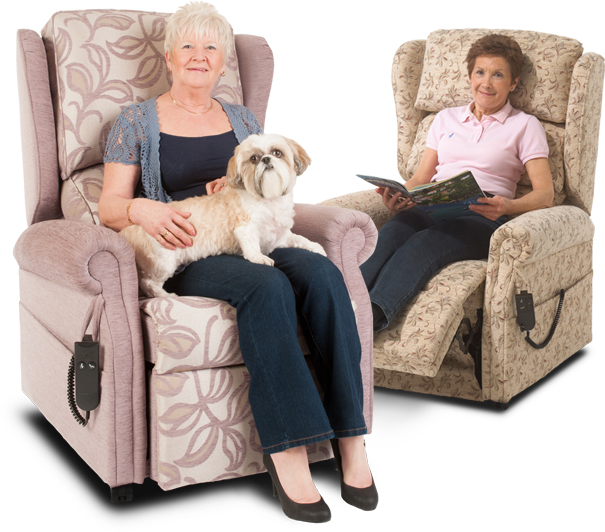A Holistic Approach
No two individuals are the same.
Everyone will have their own reason for wanting or needing to purchase a new chair.
Seating assessments can often become predominantly about sizing, making sure that measurements are correct to maximise support and comfort. Taking the correct measurements is crucial but certainly not the only factor that should be considered.
A holistic seating assessment covers various aspects including:
The person: Who is going to use the chair primarily? Consider their/your specific needs from the perspective of size, required postural support and preference. It is important that you are going to like the chair or you won’t use it to its full potential.
The environment: Where is the chair going to be used? Make sure there is access to an electric socket without having to have trailing wires across a room which increases falls risks. If space is limited there are different reclining options to consider.
The task: What is going to be done in the chair? It is crucially important that the chair supports normal routine and allows the person to engage in tasks that are important to them. There is no point having a chair that is ‘good for you’ physically if it inhibits meaningful activity.
When these elements have been considered the assessor then requires the appropriate market knowledge to determine solutions.
Awareness of mechanisms, including the difference between rise-recline and tilt in space and their evidence base, and the material used on chairs that have different properties to meet specific individual needs.
Assessors need to be aware of cushion options, both for seat, backrest and leg rest, to reduce risks of pressure damage as well as the different postural supports available to maximise comfort, health, wellbeing and engagement in meaningful activity.
Finally, an excellent assessment remains ineffective without good communication. The assessor needs to be clear whether the measurements they are providing are that of the required chair or the customer/client with consistent use of metric or imperial figures. A robust assessment template (see link below) helps both the assessor and manufacturer/distributor to ensure that the client’s needs are met and the highest quality of service can be delivered.
Within an assessment there are other important elements to consider:
Posture - consider issues such as:
- Spinal deformity
- Pelvic stability
- Trunk positioning
- Head control
Pressure – impacted on by posture
- Contractions compromising tissue viability
- Continence
- Mobility
